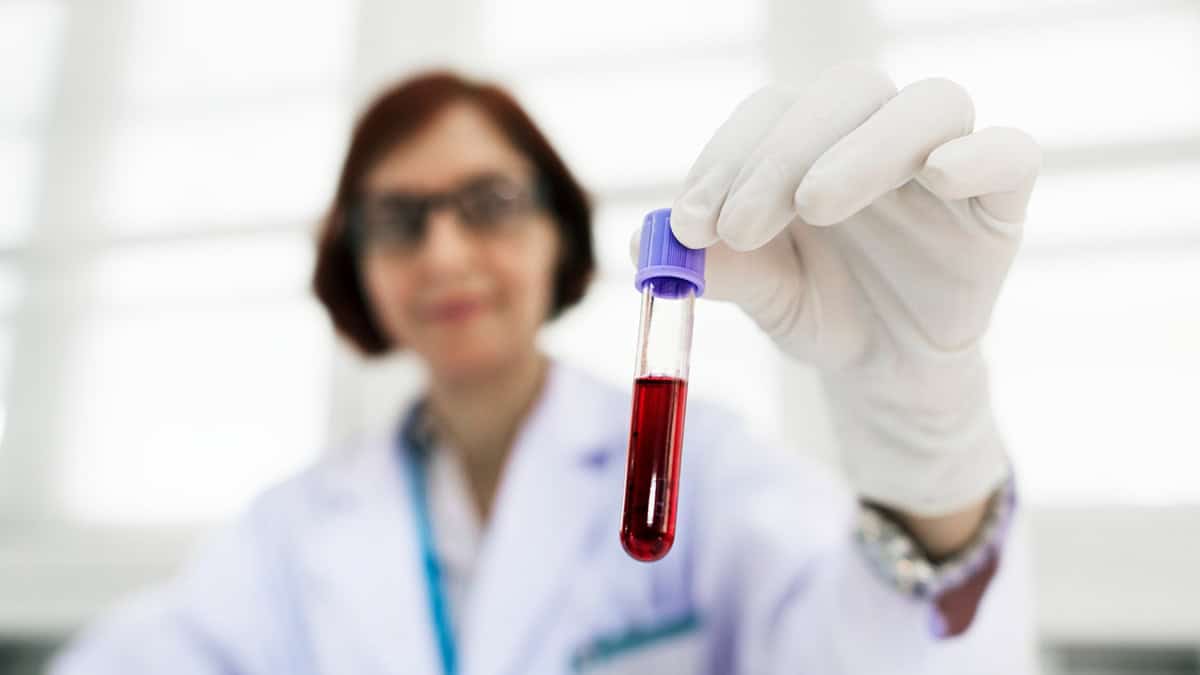Why Is Cancer on the Rise?
Physical Health

The American Cancer Society (ACS) predicts that there will be about 2 million new cases of cancer in the United States (US) diagnosed in 2024. This is the first year that new cases of cancer are expected to surpass 2 million.
Continue reading to learn more about what causes cancer and why the ACS is expecting more cases this year than ever before.
What Is Cancer?
Cancer isn’t just one disease. Instead, it’s a group of diseases caused by abnormal cells that begin to grow uncontrollably. If these abnormal cells begin to spread to other parts of the body, it can eventually lead to death.
Cancer can start in any tissue in your body. The type of cancer you have depends on the part of your body where the cancer starts.
Types of Cancer
There are two main types of cancer — hematopoietic (blood) cancers and solid tumor cancers
Hematopoietic cancers occur when blood cells begin to grow out of control and include cancers such as:
- Leukemia
- Lymphoma
- Multiple myeloma
Solid tumor cancers happen when cells grow out of control in any other organ or body tissue, forming a growth or lump called a tumor. Not all tumors are cancer. Tumors that grow very slowly and don’t invade surrounding tissue are known as benign tumors. Benign tumors typically don’t cause any problems unless they grow big enough to push on the organs around them. A benign tumor isn’t considered cancer.
A cancerous tumor is also known as a malignant tumor. Malignant tumors grow quickly and invade the surrounding tissues. If cancer cells break away from a malignant tumor, they can spread to other parts of the body, a process known as metastasis.
The most common types of solid tumor cancers are:
- Breast cancer
- Prostate cancer
- Lung cancer
- Colorectal cancer
What Causes Cancer?
Normal cells can become cancer cells through multiple changes (mutations) in the cell’s DNA. Your DNA makes up your genes, or the blueprint for how your cells should properly work, grow, and divide. DNA mutations that may lead to cancer can happen in several ways, including:
- Random errors that happen when cells divide
- DNA damage from harmful substances
- DNA changes inherited (passed down) from your parents
Several factors can result in genetic changes that lead to cancer, including your lifestyle choices, your family history, and exposure to carcinogens (cancer-causing agents). Sometimes, there isn’t an obvious cause of cancer, and researchers don’t fully understand exactly what causes cancer.
Before we look at why cancer seems to be on the rise now, we should understand some of the most important causes and risk factors for cancer.
Older Age
Your risk of developing cancer increases as you age. Most cases of cancer are diagnosed in people over the age of 50.
As you get older, your body is less able to manage the damage caused by exposure to harmful substances that can cause cancer. Normally, your body can detect and eliminate damaged cells before they become cancerous. However, older people may not be able to do this as effectively.
Additionally, older adults have had more time to be exposed to harmful cancer-causing substances.
Tobacco Use
Tobacco use is one of the leading causes of cancer. Tobacco use includes smoking cigarettes, regular exposure to secondhand smoke, and the use of smokeless tobacco products.
Using tobacco can increase your risk of developing cancer in parts of your body exposed to tobacco (such as your mouth, throat, and lungs), as well as other parts of your body, such as your bladder, kidney, pancreas, colon, and blood.
The increased risk of developing cancer is due to chemicals in tobacco and the smoke that can damage your DNA.
Alcohol Use
Drinking alcohol is linked to an increased risk of several types of cancer, including mouth, throat, esophagus, liver, and breast cancer. In general, the more alcohol you drink, the higher your risk of developing cancer.
You may have heard that drinking a glass of red wine may prevent cancer; however, research hasn’t been able to back up this claim. Currently, there isn’t any evidence that red wine can decrease your risk of cancer.
Sun and Tanning Bed Exposure
Sun and tanning beds give off ultraviolet (UV) radiation that can damage your cell’s DNA and lead to cancer.
Skin cancer is the biggest risk of unprotected exposure to UV radiation. Over time, UV exposure can cause DNA damage to build up and cause skin cells to grow out of control.
Sunburns also increase your risk of cancer. Despite being a known risk factor for skin cancer, sunburns are common. About 1 in 3 adolescents and adults in the US get sunburn each year.
Overweight and Obesity

Having excess body weight is linked to an increased overall risk of developing cancer. Excess body weight can be classified as overweight or obesity, as defined by your body mass index (BMI). A BMI of 18.5 to 24.9 is considered to be a healthy weight. If you have a BMI of 25 to 29.9, it’s considered overweight. A BMI of 30 or higher is considered obese.
Having excess body fat can change the way parts of your body work and increase your risk of developing cancer. For example, excess body fat may affect:
- Inflammation levels
- How your cells and blood vessels grow
- Your cell’s ability to live longer than normal
- Hormone and growth factor levels, which can fuel cancer cell growth
- How well cancer cells can spread to other parts of your body
Infectious Disease
Some cancers are linked to exposure to certain infectious diseases, such as bacteria, viruses, and parasites. Infectious diseases may lead to cancer by increasing inflammation in your body or changing how your cells grow and divide.
Lifestyle Habits
Your lifestyle habits, such as what you eat and how much physical activity you get, can also affect your risk of cancer.
While it’s clear that your diet can impact your risk for cancer, research hasn’t been able to prove that a specific diet in humans can cause or prevent cancer. However, some components of food have been linked to cancer, including some artificial sweeteners, charred meat, and acrylamide.
Physical activity can help lower your cancer risk by helping with weight control, optimizing hormone levels, and boosting your immune system.
Genetics
Cancer is a genetic disease that results in changes in the way your cells grow and divide. Some genetic mutations that make you more likely to develop cancer can be inherited (passed down) from your parents. This is why your healthcare provider may ask you questions about your family history of cancer to understand your risk for certain cancers.
Exposure to Harmful Substances
Substances that are known to cause cancer are known as carcinogens. Carcinogens cause cancer by damaging your cell’s DNA. Researchers at the International Agency for Research on Cancer (IARC, part of the World Health Organization) and the US National Toxicology Program (NTP) help determine which chemicals and substances are known to cause cancer in humans.
You can’t always avoid carcinogens, as they are found in the air, water, and food you consume. Some people are exposed to carcinogens through their jobs. The NTP has identified several chemicals known to be carcinogenic to humans, including:
- Aflatoxins
- Arsenic
- Asbestos
- Benzene
- Cadmium
- Coal tar and coal-tar pitch
- Coke-oven emissions
- Crystalline silica
- Ethylene oxide
- Formaldehyde
- Indoor emissions from the household combustion of coal
- Mineral oils: untreated and mildly treated
- Nickel compounds
- Radon
- Soot
- Trichloroethylene
- Vinyl chloride
- Wood dust
Radiation
Radiation is a form of energy that travels from one place to another in the form of waves or particles. Some types of radiation have enough energy to damage your DNA enough to cause cancer. Exposure to radon and X-rays have been linked to cancer.
Why Are More Cancers Being Diagnosed?
Two of the most important factors contributing to the higher number of cancer diagnoses are increased rates of overweight and obesity and an aging population.
Increased Body Weight
More than 40% of Americans are living with obesity in 2020. The percentage of Americans with overweight or obesity has increased over the past 20 years. In 2000, about 30% of Americans were living with obesity.
As more and more people are living with overweight and obesity, the rate of health problems related to excess weight is also expected to rise.
The risk of several types of cancers is associated with higher body weight, including:
- Endometrial cancer
- Liver cancer
- Kidney cancer
- Pancreatic cancer
- Colorectal cancer
- Breast cancer
It’s already estimated that obesity is responsible for about 11% of cancers in women and 5% of cancers in men. Additionally, obesity is linked to about 7% of cancer deaths. Experts at the American Cancer Society worry that the rise in obesity-related cancers and deaths will halt the trend of decreasing deaths due to cancer.
Aging Population
The risk of many cancers increases with age. People over the age of 65 are most likely to be diagnosed with cancer. In 2020, 1 in 6 people in the US was over 65 years old. With more older adults in the population, age-related cancer rates may increase.
Why Are More Young Adults Diagnosed With Cancer?
You may have seen reports on the rising rates of cancer in younger people under 50 years. When cancer is diagnosed in adults younger than 50 years, it’s known as early-onset cancer. Early-onset cancers tend to be more aggressive and are often linked to certain inherited genetic mutations.
Between 1995 and 2020, more younger adults under the age of 50 were diagnosed with cancer than in previous time periods. The types of cancer that are becoming more common in younger adults include:
- Breast cancer
- Prostate cancer
- Endometrial cancer
- Colorectal cancer
The increase in cancer in young people is new, so researchers are still learning about why it’s occurring. Talk to your healthcare provider about your risk factors for early-onset cancer.
How Do You Know You Have Cancer?

If you’re concerned you may have cancer, talk to your healthcare provider. The way cancer is diagnosed depends on the type of cancer you have. Your healthcare provider may use a combination of several tests to check for cancer, including:
- Physical exam — to check for changes or lumps that may be cancer
- Blood tests — to check for specific substances or abnormalities in your blood
- Imaging tests — to look at images of the inside of your body
- Biopsy — to examine a small tissue sample
Healthcare providers can detect some types of cancer before you begin to notice symptoms. Testing for cancer before you have symptoms is known as cancer screening. Colon, prostate, and breast cancer screening usually begin in your 40’s or 50’s.
7 Ways to Prevent Cancer
While it isn’t possible to prevent all types of cancer, there are some things you can do to prevent cancer.
1. Eat a Healthy Diet
A healthy eating pattern can help you maintain a healthy weight and reduce your risk of cancer. Healthy eating includes eating plenty of fruits and vegetables, fiber, and whole grains that are high in vitamins and nutrients and low in calories. A healthy diet should limit red meat, sugary drinks, and highly processed foods.
2. Stay Active
Physical activity can help you maintain a healthy weight, decrease inflammation, and help you feel your best. It’s recommended to get at least 150 minutes of physical activity every week — that’s about 30 minutes almost every day. Research has found that physical activity on its own may help you prevent breast cancer and colon cancer.
3. Don’t Smoke
If you don’t smoke, don’t start using tobacco products. If you currently smoke, talk to your healthcare provider about the best way to stop.
You should also avoid e-cigarettes or vapes. While the negative health effects of cigarettes have been long established, e-cigarettes are new. Researchers are still learning how these products can affect your risk for cancer. However, many e-cigarettes contain some of the same cancer-causing chemicals as traditional cigarettes.
4. Protect Yourself From the Sun
You may be able to prevent some types of skin cancer if you wear proper sun protection and avoid tanning beds.
5. Get Vaccinated
Vaccines that help prevent certain viral infections associated with cancer can help you prevent these cancers. The human papillomavirus (HPV) vaccine can help prevent most cases of cervical and anal cancers. The hepatitis B virus vaccine may help prevent some types of liver cancer.
6. See Your Healthcare Provider Regularly
Regular medical care can help you detect cancer in the early stages while you still have many treatment options. Talk to your healthcare provider about when you should start screening for certain cancers.